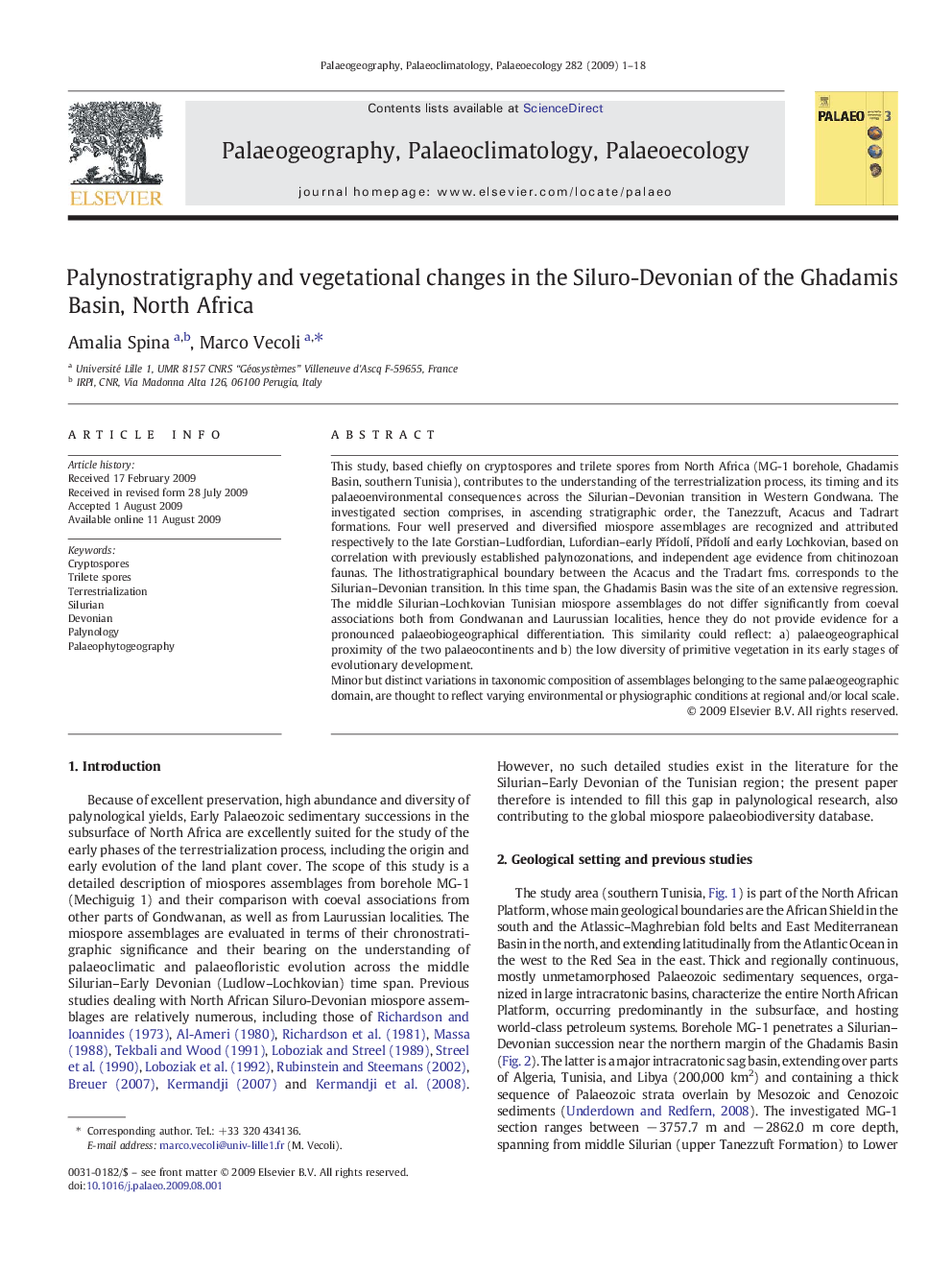| Article ID | Journal | Published Year | Pages | File Type |
|---|---|---|---|---|
| 4467917 | Palaeogeography, Palaeoclimatology, Palaeoecology | 2009 | 18 Pages |
This study, based chiefly on cryptospores and trilete spores from North Africa (MG-1 borehole, Ghadamis Basin, southern Tunisia), contributes to the understanding of the terrestrialization process, its timing and its palaeoenvironmental consequences across the Silurian–Devonian transition in Western Gondwana. The investigated section comprises, in ascending stratigraphic order, the Tanezzuft, Acacus and Tadrart formations. Four well preserved and diversified miospore assemblages are recognized and attributed respectively to the late Gorstian–Ludfordian, Lufordian–early Přídolí, Přídolí and early Lochkovian, based on correlation with previously established palynozonations, and independent age evidence from chitinozoan faunas. The lithostratigraphical boundary between the Acacus and the Tradart fms. corresponds to the Silurian–Devonian transition. In this time span, the Ghadamis Basin was the site of an extensive regression. The middle Silurian–Lochkovian Tunisian miospore assemblages do not differ significantly from coeval associations both from Gondwanan and Laurussian localities, hence they do not provide evidence for a pronounced palaeobiogeographical differentiation. This similarity could reflect: a) palaeogeographical proximity of the two palaeocontinents and b) the low diversity of primitive vegetation in its early stages of evolutionary development.Minor but distinct variations in taxonomic composition of assemblages belonging to the same palaeogeographic domain, are thought to reflect varying environmental or physiographic conditions at regional and/or local scale.
